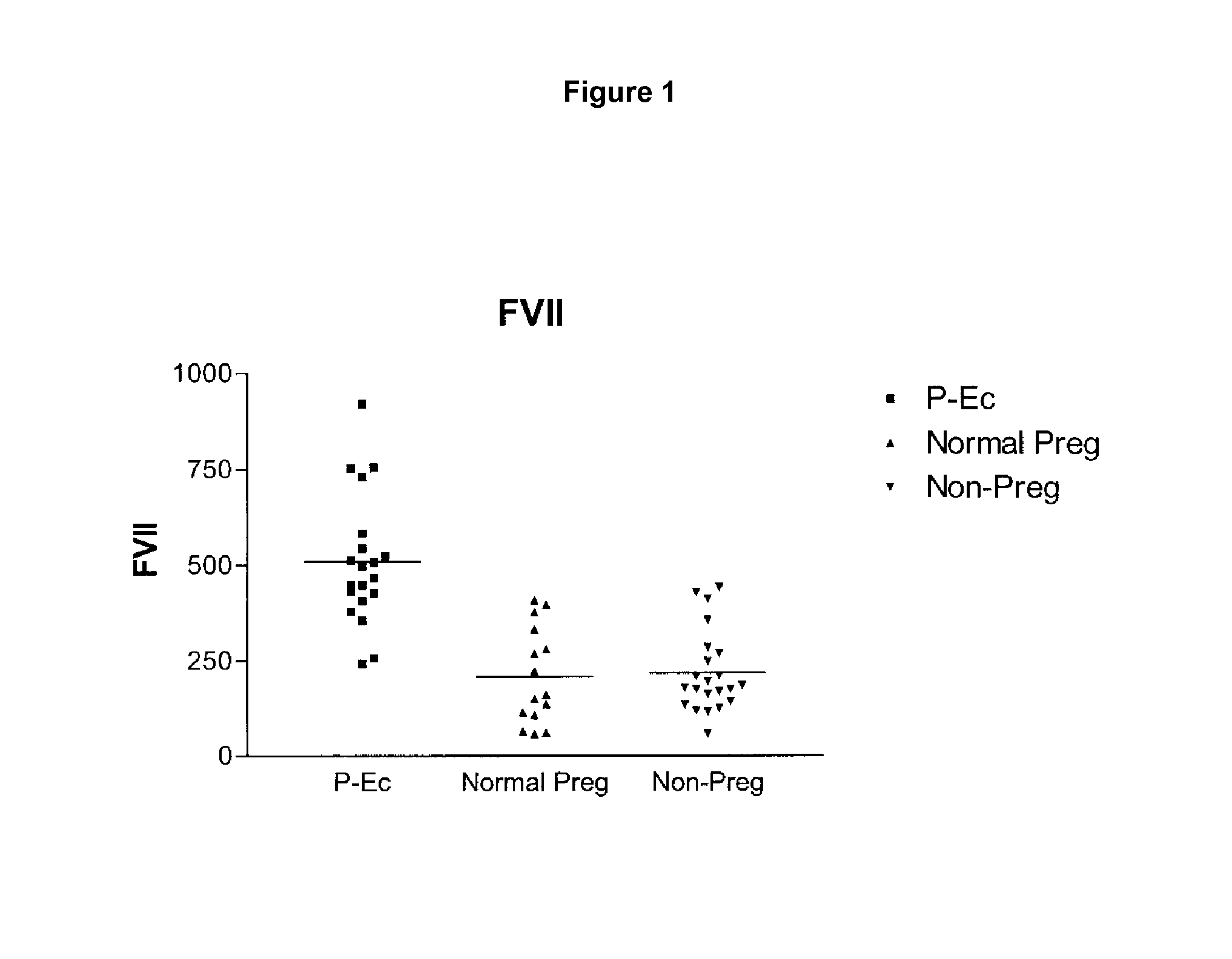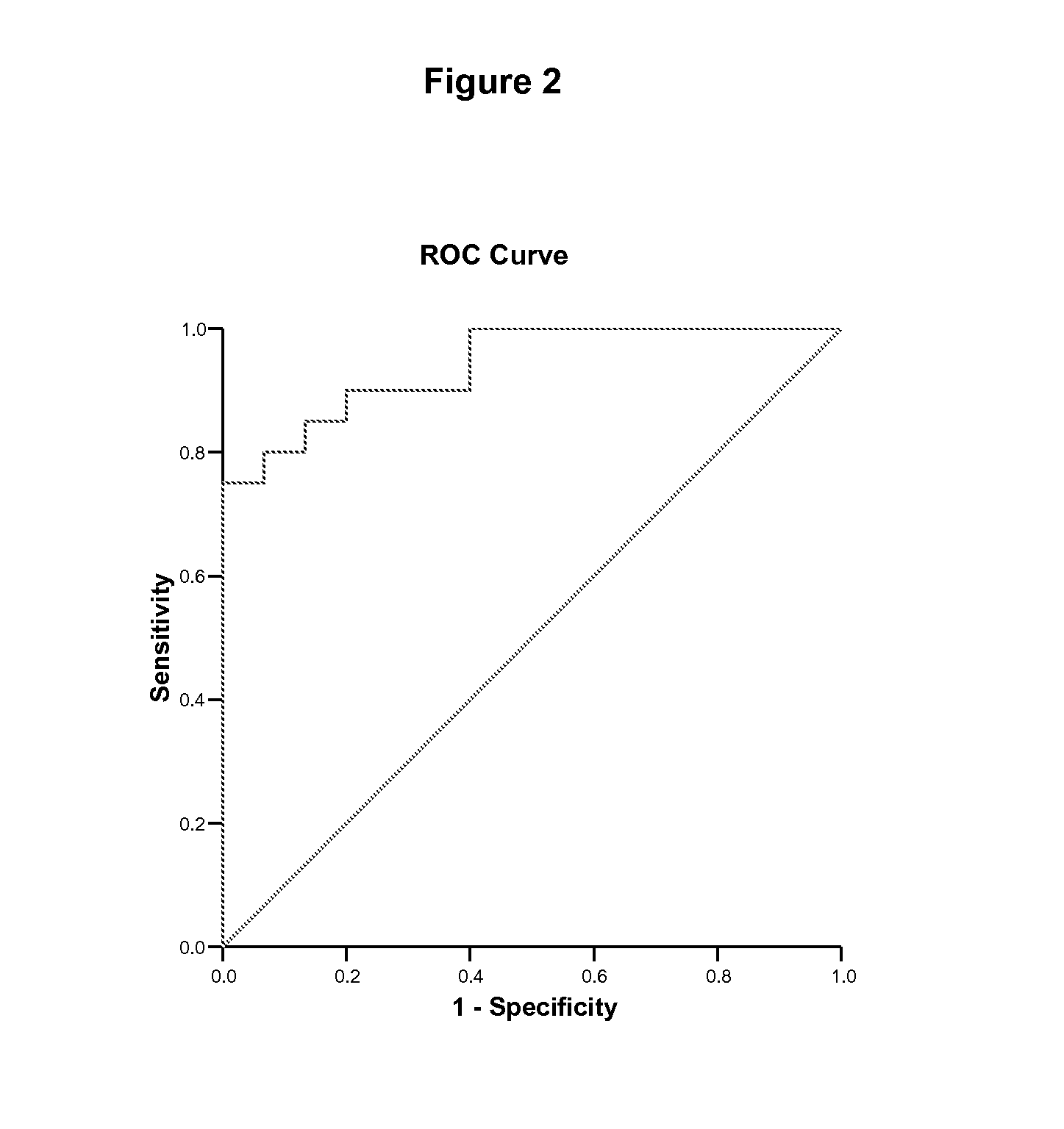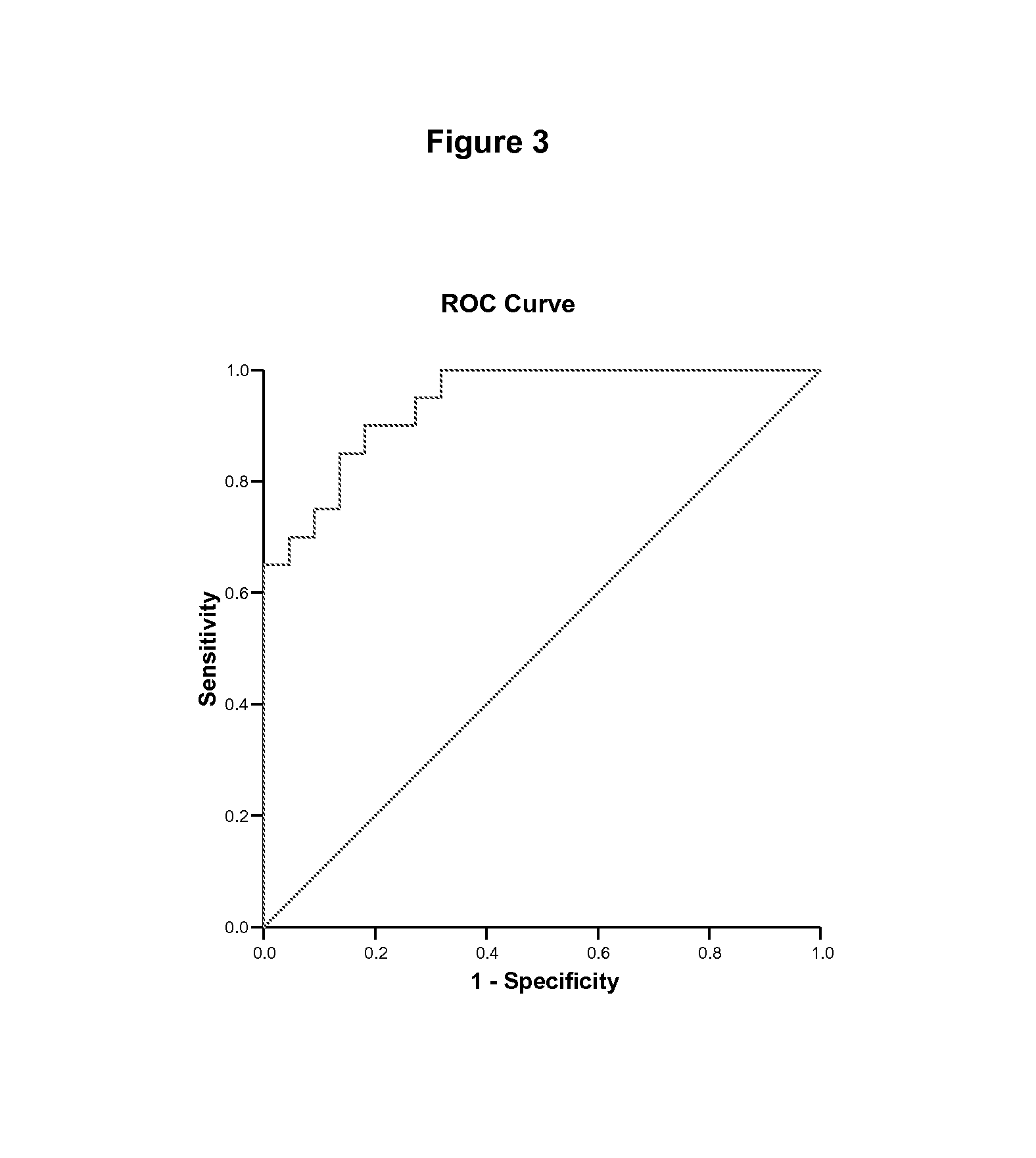Total plasma fvii/fviia levels as indicators of pre-eclampsia of pregnant females
a technology of total plasma fvii and fviia, which is applied in the direction of instruments, biochemistry apparatus and processes, material analysis, etc., can solve the problems of inability to provide a reliable guide, intrauterine death, etc., and achieve high sensitivity and specificity
- Summary
- Abstract
- Description
- Claims
- Application Information
AI Technical Summary
Benefits of technology
Problems solved by technology
Method used
Image
Examples
example
Materials and Methods
Subjects
[0014]Ethical committee approval was granted for the study by the Southampton and South West Hants Local Research Ethics Committee. Informed consent has been sought from all participants and the relevant clinical details for each subject have been recorded. A total of 57 age matched women were studied. These included healthy non-pregnant women (n=22; mean age=29±6.04), normal pregnant women (n=15; mean age=30.4±5.04), and women with P-EC (n=20; mean age=29.1±5.59), at the third trimester. As noted above, severe P-EC was defined by diastolic blood pressure >110 mmHg at admission, or >90 mmHg on two or more consecutive occasions, 4 hours apart; and proteinuria (either ≧300 mg protein per day or an urinary protein / creatinine ratio ≧30 mg / mmol) occurring after 20th week of pregnancy. The healthy non-pregnant or normal pregnant women (control groups) had systolic / diastolic blood pressure below 120 / 80 mmHg and no history of hypertension or proteinuria. Exclusi...
PUM
 Login to View More
Login to View More Abstract
Description
Claims
Application Information
 Login to View More
Login to View More - R&D
- Intellectual Property
- Life Sciences
- Materials
- Tech Scout
- Unparalleled Data Quality
- Higher Quality Content
- 60% Fewer Hallucinations
Browse by: Latest US Patents, China's latest patents, Technical Efficacy Thesaurus, Application Domain, Technology Topic, Popular Technical Reports.
© 2025 PatSnap. All rights reserved.Legal|Privacy policy|Modern Slavery Act Transparency Statement|Sitemap|About US| Contact US: help@patsnap.com



